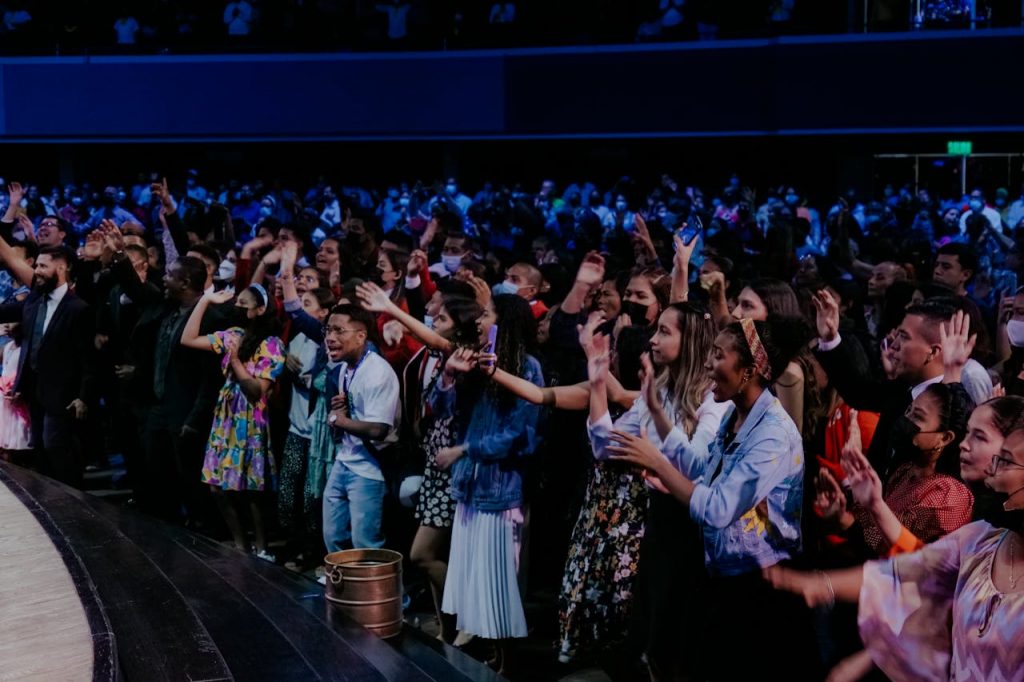- A community connected through space makes the foundations of a fulfilling worship.
- Virtual gatherings are becoming crucial for inclusive and meaningful spiritual engagement across diverse locations.
- Exploring VR and AR can significantly enhance the accessibility and personalization of spiritual practices and rituals.
- Despite technological advancements, cultivating genuine human connections within faith communities is fundamental.
- The future of spiritual practices lies in balancing innovative technology with the essence of human connection.
In the ever-evolving landscape of human interaction, the digital age has revolutionized communication and transformed how we engage with our spiritual communities. This paves the way for a more inclusive, accessible, and flexible approach to spirituality for millions. This post will explore the rise of virtual gatherings and their profound impact on the spiritual landscape.
Development of Spiritual Gatherings
Historically, physical gatherings have been the cornerstone of spiritual practices across various faiths and cultures. These gatherings provided physical space for collective worship, rituals, and a sense of community and belonging among attendees.
Essential to these gatherings was transmitting traditions, teachings, and values from one generation to another, ensuring the continuity and vibrancy of faith communities. They enabled personal interactions that embodied the life lessons leading to a support system among members.
The presence of a congregation and the shared experience of spirituality in a dedicated sacred space have long been pivotal in nurturing the communal and individual sense of spiritual fulfillment. This community has become the foremost purpose of gatherings.
Unveiling the Challenges of Conventional Worship
While it is an immersive experience for its followers, there are disadvantages if the churchgoers’ multifaceted lives are considered. Here are some of the common challenges faced by traditional spiritual sessions:
Geographic Limitations
Many have been unable to access their spiritual homes through physical attendance due to geographic constraints. The elderly, disabled, or those living in remote areas often struggle with the logistics and physical strain of participation in traditional services.
Constricted By Time
Finding time to sit through conventional service hours can be a significant barrier in our modern, fast-paced world. Work schedules, childcare responsibilities, and other time constraints frequently clash with community gathering times.

Woes of Social Anxiety
Attending in-person services can be intimidating for some, especially if they are newcomers to the community or generally uncomfortable in large group settings. Social anxiety, in its various forms, deters individuals from partaking in rituals that are so integral to spiritual growth and community bonding.
Virtual Spirituality Adapts and Overcomes
With the individual challenges perceived as vital to the experience and activities, virtual spaces cater to the following advantages.
Online Church Services: Flexibility Without Compromise
The digital sphere offers a flexible engagement model that is particularly resonant in a society that runs 24/7. Virtual services are often recorded and available for viewing anytime, accommodating the most unusual schedules. The live stream church services efficiently and equally conveniently provide the flexibility to engage with religious events without disrupting the day’s plan.
Inclusivity Through Diverse Approaches
The online space can be shaped to cater to inclusivity in a manner unimaginable within the confines of traditional systems. Designing virtual spaces with accessibility and inclusivity acknowledges and accommodates various physical, emotional, and psychological needs, cultivating a genuinely open space for all.
Navigating the Future of Faith Online
Blended Model: Combining Virtual and the Physical Aspect
By integrating these two facets, faith communities can create a more resilient and adaptable framework for spiritual connection that respects individual preferences and limitations. This approach allows for a rich, traditional experience and community engagement while harnessing accessibility, inclusivity, and convenience.
Creating immersive spiritual experiences.
Exploring the potential of virtual reality (VR) and augmented reality (AR) in spiritual practices can transform how we experience and perceive sacred spaces and rituals. This could revolutionize prayer, meditation, and other spiritual activities by making them more accessible and tailored to meet the individual’s emotional and spiritual needs, regardless of physical location.

Fostering a sense of community remains key.
Despite the innovative technological advancements, the essence of faith communities is the human connection. Online and offline spaces must prioritize cultivating genuine relationships and a strong sense of belonging. This emphasizes that, regardless of the methods or technologies employed, the enduring value lies in connecting individuals and nurturing a shared spiritual journey.
Virtual gatherings have emerged as a powerful force in reshaping spiritual engagement. By offering flexibility, accessibility, and inclusivity, they empower individuals to connect with their faith communities meaningfully, regardless of location or personal limitations. As technology evolves, we can expect even more immersive and personalized virtual experiences that enrich the spiritual landscape while fostering a sense of human connection that remains at the core of any spiritual practice.

















